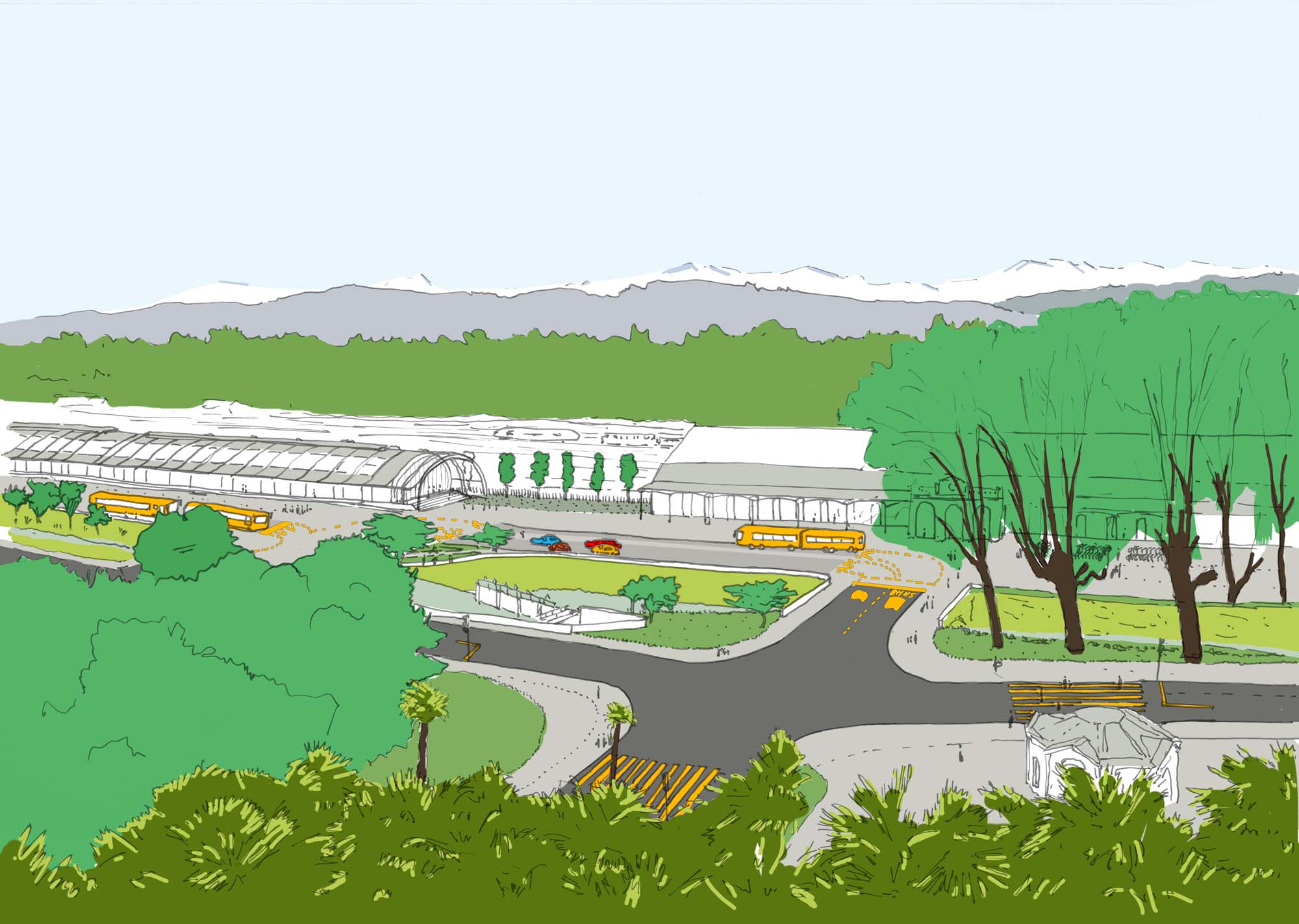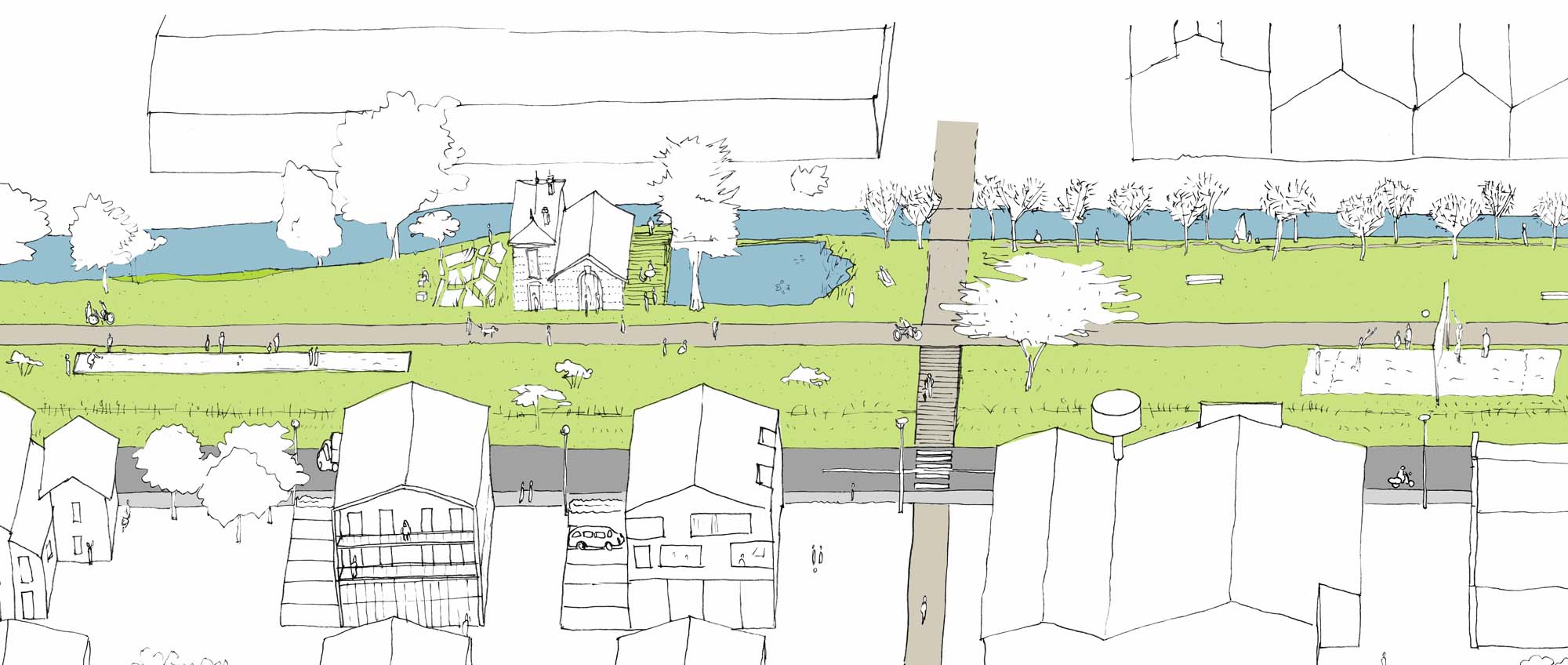Pau Rives du Gave
Designed, developed and managed while working at Atelier Seraji Architectes et Associes
Pau, France
2014-2017
project information
CLIENT City of Pau, France
SIZE 85 ac
PROGRAM transportation hub, industrial site renewal, public space, street and landscape
design
SERVICES Urban Planning, Urban Design, Design guidelines, Public space Design
STATUSImplementation ongoing by other parties
ROLE Project Architect
COLLABORATORS
Patrick Ecoutin (Landscape Architect)
SETEC INTERNATIONAL (Civil Engineer)

Atelier Seraji was in charge of the urban planning of an area comprised between the historic city center of Pau to the north and the River “Gave”.

The access and plaza in front of the train station, with local and high speed trains, was entirely redesigned to create a welcoming pedestrian-friendly plaza, that efficiently and seamlessly integrates car traffic and several local/regional bus lines.

East of the train station, the urban and real estate development of part of a former industrial site was studied under different scenarii, all including public transportation and increased parking capacity.

Along a XIXth century canal, the informal bike lane to the river was transformed into a generous linear park.

The original curve of the incoming street was simplified to allow safer traffic for all modes.

Several simple outdoor amenities such as a petanque court, a beach volleyball court and some more intimate gardens activate the park. Possible housing and retail was envisioned along the street.

The old canal house is maintained to anchor the park, acting as a cafe and music venue.

Also on formerly industrial land, continuing south the linear park widens into a truly landscaped parking lot serving a nationally known kayak training center and stadium.

Tree and shrub selection, rainwater collection, and materials were carefully designed and developed to offer a first taste of the natural park along the River. Retail and office buildings linked to sports, school activities and lodging, were recommended.

A BMX track sunken into the ground was designed to turn it into a well visible intriguing landscape. The approach to the kayak training center and stadium is rethought to prioritize pedestrian and increase engagement.

Closer to the River part of the abandoned banks of the river are revitalized taking advantage of a locally slower flow.